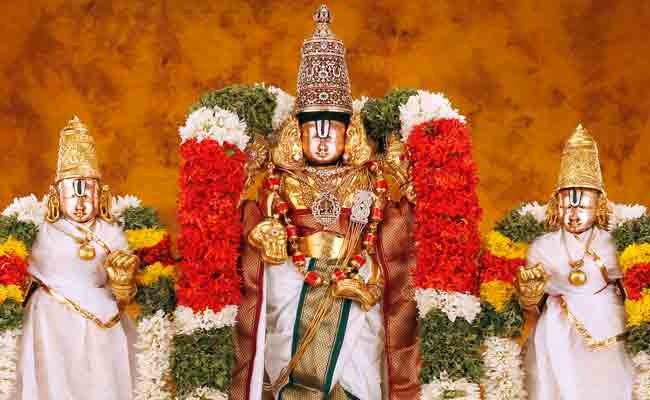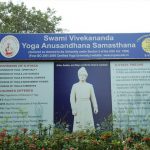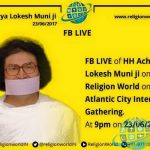It is dream of all the devotees of Tirupati Balaji to at least see once in a lifetime the annual celestial event called Brahmotsavam. It is said that the name Brahmotsavam comes from the belief that Brahma first performed the rituals that are now conducted for nine days. The festival features religious processions through the streets of the temple complex, with the Balaji idol decked as a specific incarnation, riding a different vehicle each day.
It begins with the Ankurarpana (sowing) of the navadhanyas (nine kinds of seeds that are consecrated as offerings to the navagrahas, celestial bodies in Hindu astrology). These are planted in nine mud pots over nine days. The next ritual is Dhwajarohanam, where a piece of cloth painted with the image of Garuda is mounted high on a pillar (Garuda Dhwaja). The fluttering flag is deemed to be the invitation for the gods to attend the Brahmotsavam. It is said that 30 million deities accept the invite and descend upon the seven hills. Thus, the occasion is considered highly auspicious.
There is a popular saying in Telugu: Venkatadri samasthanam brahmande nasti kinchanaha (There is no place like Tirumala and there is no God like Lord Venkateswara). And indeed, visiting the temple during Brahmotsavam is an unrivalled experience – the tide of devotion, amidst the colourful and joyous rituals, is sure to engulf you, regardless of your faith.
The nine days Brahmostavams are one of the magnificent festivals celebrated at Tirumala. This is most important festival among all festivals in Tirumala in this is year (September 23 to October 1).

Brahmotsavam, the Hindu festival is an auspicious festival celebrated every year at the Tirumala Venkateswara Temple at Tirupati in Andhra Pradesh. According to legends the origin of this festival is associated with Lord Brahma. It is believed that once Lord Brahma worshiped Sri Balaji at the catchment area of the holy Pushkarini River to thank the Lord for fortification of mankind. The festival derives its name from Lord Brahma since it was Lord Brahma who first conducted this festival at Tirupati temple.
“Brahmotsava” which literally means “Brahma’s Utsavam”. The festival is celebrated with great zeal during the month of October. The celebration of the Brahmostsava is performed over nine-day period. On the very first day of the festival “Anurarpana” ritual is performed along with the celebration of Shri Vishvaksena. The “Anurarpana” ritual signifies fertility, abundance and prosperity. During all nine days of the festival various religious activities like homas and daily processions were various idols of the god are taken out different chariots (vahanas) present in the temple.
Importance of Brahmotsavam
The importance of this festival can be known by the fact that every year thousands of devotees flock in Andhra Pradesh to be the witness of this majestic festival. They enjoy participating in the various rituals conducted during the nine days to seek the blessing of Lord Venkateswara Swami. The devotes assimilated to take part in the auspicious festival often term the experience as a heavenly connect and blissful (“ Vaikunth Anubhav”). firstly Gurudadhwaja Festival is hosted near Srivari Alaya Dhwajasthambham. Then a procession dedicated to Lord Venkateshwara proceeds on Pedda Seshavahana and covers four streets of the temple. This goes on for two hours until midnight. During this festival it is believed that the mighty snake alter itself as the vehicle for God. The main reason for celebrating this festival is to pray to God for providing a life which is filled with high values and morals.
Must Read: 30,000 people in Delhi pledge for a value based society Ahead Navratri
The Brahmotsavam is performed over a nine-day period in the beginning of Āśvina Masa as per the Hindu Lunar Calendar(in parallel with Navarathri/Dasara festival). On the evening before the start of the first day, the rite of “Ankurarpana” (sowing of the seeds to signify fertility, prosperity and abundance) is performed along with a festival for Vishvaksena (the leader of Narayana’s retinue who removes obstacles and protects worship). On the first day, the main activity is the “Dwajarohana,” the hoisting of the Garuda flag at the Dhvajastambham. This signifies the commencement of the Brahmotsava. It is believed that Garuda goes to Devalokam and invites the Devas to attend the function. During the days of the festival, the religious activities include daily homas and processions of utsava-murti on different Vahanas on mada streets(roads surrounding the Temple). Every evening, the utsava-murtis are decorated with different alankarams. The concluding day is the Janma Nakshatra (birth star) of Sri Venkateswara, which is celebrated in a grand way with Avabhritha Utsava (special abhishekams for the utsava murti). In Tirupati, the Sudarshana Chakra is bathed in the Swami Pushkarini and all the devotees bathe along with the Chakra. In Aurora, a priest takes the Sudarshana Chakra on his head and takes a holy bath in Swami Pushkarini. Afterwards, the Chakra is placed on a high platform, so the devotees can walk under it and be blessed with the water dripping down from the Sudarsana. The celebration officially concludes with “Dhvajavarohanam,” the lowering of the Garuda flag. The priests pay respects to Gods and Sages with the chanting of Vedic mantras and see them off on their return to the Devaloka.
Day 1 – Pedda Seshavahana

The festival starts with the Dhwajarohana that is hoisting the Garudadhwaja (flag which has an emblem of a black eagle) near the Srivari Alaya Dhwajasthambham which is followed by a spectacular procession of Lord Venkateshwara on a chariot known as Pedda Seshavahana is taken around the four streets of the main temple. The procession is carried out at ten in the night and continues till midnight. The procession lasts for the first two days of the festival.
Day 2 – Chinna Seshavahana

The second day of the festival starts with a huge procession in the morning. The idol of the lord is taken out on the streets but this time on Chinna Seshavahana. After the procession the lord is worshipped throughout the day and in the night the deities are taken to Uyala Mandapam for the Unjal Seva (swinging).
Day 3 – Simhavahana

The deities are carried around on the streets on Simhavahana – a vehicle which has a Lion`s emblem on it. The lion’s emblem denotes the command and authority. After the procession the deities are taken again for the Unjal Seva which is followed by an exciting ride on Mutayalapandiri Vahana in the night which is the symbol of purity.
Day 4 – Kalpavriksha Vahana

The deities are carried out in a Kalpavriksha Vahana in the morning. The vehicle shaped like a tree which signifies that the Lord grants boons and fulfils the wishes of his devotees. Kalpavriksha is name of a tree which is belived to grant boon and fulfill all the wishes. In the night, after the Unjal Seva, the deities are carried in a Sarvabhoopala Vahana. Sarvabhoopala means `all the kings of Mother Earth`.
Day 5 – Garuda Vahana

A majority of pilgrims visit the temple on fifth day day. In the morning the Mohini Avatarotsavam is celebrated to memorialize the Lord`s incarnation as Mohini. The Lord is dressed like Mohini and is taken out in a procession in a Pallaki (palanquin).After the Unjal Seva in the night, the Lord along with other deities are seated on Garuda Vahana.
Day 6 – Gaja Vahana

In the morning of the sixth day, the deities of the temple are carried out on a beautifully-decorated Hanumad Vahana. Instead of the Unjal Seva, the Vasantotsavam is celebrated on the sixth day. In the night the Lord is taken out in a procession seated on a Gaja Vahana.
Day 7 – Suryaprabha Vahana

On the seventh day, in the morning the lord is escalated on the Suryaprabha Vahana (sun chariot) whereas during the night the lord is taken out on Chandraprabha Vahana after Unjal Seva.
Day 8 – Rathotsavam

On the eight day the Lord is taken on a procession seated on a chariot which is also known as Rathotsavam. The idols of Daruka, (the charioteer of Lord Sri Krishna) and the four horses are placed before the decorated idols of the Lord and his consorts. The devotees pull the chariot. After the Unjal Seva in the night, the deities are taken in the Aswa (horse) Vahana. It is believed that all those who witness the Rathotsavam will not be reborn.
Day 9 – Chakrasnana Mahotsavam

On the last day the Pallaki Seva and Chakrasnana Mahotsavam is conducted in the morning whereas Dhwajavarohanam is performed in the evening. All the images that were taken out in the procession are smeared with oil, turmeric powder and other auspicious ingredients and Abhishekam is performed. Sudarsan Chakram is also given a bath in the Swami Pushkarini. The Garuda flag which was hoisted on the first day to mark the onset of the festival is lowered symbolizing the end of the nine day festival.
Day 10 – Pushpayagam

On the 10th day, the perumal is decorated with great flowers and the Vaghanam, pushpayagam is also very well decorated. During this utsavam,the thiruvaaradhanai is done for 12 times with those 12 different flowers which is done as the “Prayasitham” (Apologize) that if any “Kaala Niyamam” (mistakes while performing utsavam) is done.
Day 11- Vidayatri

Tirumala Brahmotsavam On the 11th day, Vifsysyti Utsavam is done and this utsavam is called as”Sirama pasiharam”. And during, this Vidayatri Utsavam, Thirumalayappan gives his seva towards Ananthazhwan and the Sri sadari is dedicated stating that he is being blessed by the perumal.
Gearing up for the Big event
Tirumala is all dressed up with flower medians, electrical display stations, security barricades, extended parking lots; streamlined food parks Laddu Prasadam counters and waiting queues. The Nine day Brahmotsavam festival is pinnacle of events organized by the TTD out of a total of 450 festivals round the year.
The serene and lush green sanguine surroundings of Tirumala will throb with the crescendo of Namo Venkateshaya chants as millions of devotees throng the hill shrine to be blessed by their revered deity and fulfill their vows in return for the boons showered by him. The serpentine ghat roads, the foot paths and steps to hill shrine will be flooded with motorists and devotees on foot throughout the day and night.
******************
Must Read : #KnowYourRivers : Godavari River
Must Read : Religion News Updates – South India









